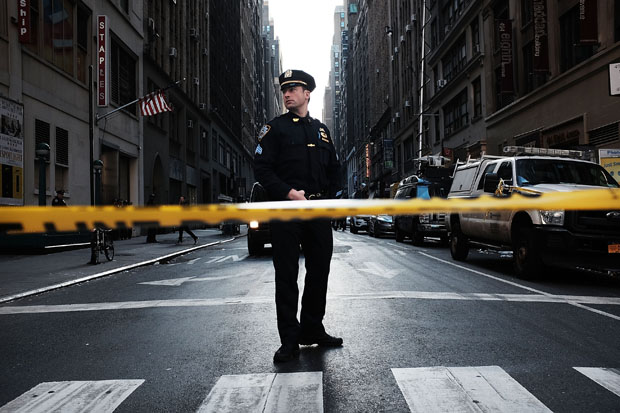One of the most shocking items of recent news has been the bald statistic that the number of people shot by law enforcement officers in the United States last year was 1,136. Not died by gangland shooting, domestic violence or terrorist attack. But killed by those who are meant to be preventing such deaths. Many of them are black or Hispanic. As if on cue, the World Service this week launched a documentary series to find out why this is happening. What are the deep structural issues that give rise to such inequalities of experience and opportunity in the (supposed) Land of the Free?
The first episode of The Compass: America in Black and White on Thursday, presented by Rajini Vaidyanathan (and produced by Giles Edwards), took a deeper look at how the criminal-justice system operates there by talking to people who have experienced its workings in places as far apart as Kansas and New Jersey. In Nicodemus, for example, surrounded by fields of corn, Vaidyanathan met Derek Moore who is a descendant of one of the original settlers of the town, founded in 1877 by freed black slaves (and named after the biblical figure who reminded his colleagues in the Sanhedrin that those appearing in court should be heard before being judged). Moore had been at a party raided by police and ended up in jail awaiting trial on a drugs charge. The case was eventually dropped but only after he had experienced seven months in prison.
Vaidyanathan did find an officer in New Jersey who understood that the police should be seen as ‘guardians and protectors’ rather than ‘warriors and enforcers’. And he explained how a simple change in body language can make all the difference. When an officer ‘tells’ someone to calm down, they usually gesture towards them with their palms down, he said. Instead the palms should be held upwards, opening yourself up. ‘It’s more welcoming.’
We were given real insights into the other big story of the New Year in Hashi Mohamed’s programme about The Boat Children (Radio 4, Sunday, produced by Tim Mansel). Mohamed himself arrived in the UK as a child migrant, aged nine, sent from Nairobi to make a better life after his father died. He was lucky, he says, because he travelled with his siblings and came by plane, flying in via Paris. The teenagers he met in Italy, at refuges set up by charities such as Save the Children, had usually travelled on their own, with no one to guide them, thousands of miles, across numerous borders, through war zones, hiding on lorries, in leaking boats, walking without food and sometimes water. Why?
‘I just want a better life for my family,’ said ‘Blues’, who arrived in Sicily by boat from Tripoli having travelled there from deep inside sub-Saharan Africa. Neither of his parents could read. They gave him money to pay the people smugglers because they wanted ‘the next generation to do better’.
Mohamed is struck by their bright eyes, their optimism, their sense of adventure, even after all the horrors they have experienced. After talking to Ali, who left Ethiopia for Europe by way of Libya, and having arrived in Italy wanted to make his way to Finland because he had heard that he could get a better education there, he began to realise that these migrants are really only children in spite of how adult they might appear. The journey is almost like a game to them. ‘Each stop is a level to complete.’
Radio 3 began the New Year by renaming CD Review, or rather taking us back to the 1960s and to Record Review, looking backwards for the future — because, we are told, ‘record’ is a more accurate reflection of the way we actually ‘consume’ music these days. We are promised no changes to the format. Phew! Meanwhile on The Essay (Monday to Friday, produced by Elizabeth Allard) five experts introduced us to ‘seismic moments’ in ‘new music’. On Monday we heard from Robert Worby, who sought to explain the significance of John Cage’s controversial work 4’33”.
This was first ‘performed’ at Woodstock in upstate New York on 29 August 1952. David Tudor, a pianist, walked on to the stage, sat down, put his score on to the piano, switched on a stopwatch, depressed one of the piano pedals and closed the piano lid. After 30 seconds he took his foot off the pedal and stopped the stopwatch and repeated these actions two more times until four minutes and 33 seconds had elapsed. Not a single note was played.
We call it ‘the silent piece’ but in fact it’s usually anything but silent. When the poet Ian McMillan chose to have it played as one of his discs on Desert Island Discs the producer ensured we could hear his stomach rumbling so that we knew the programme was still on air. And, as Worby explained, the listeners to 4’33” supply most of the sound material. We are just as crucial to its performance as the composer or the performer, which was actually Cage’s point.






Comments